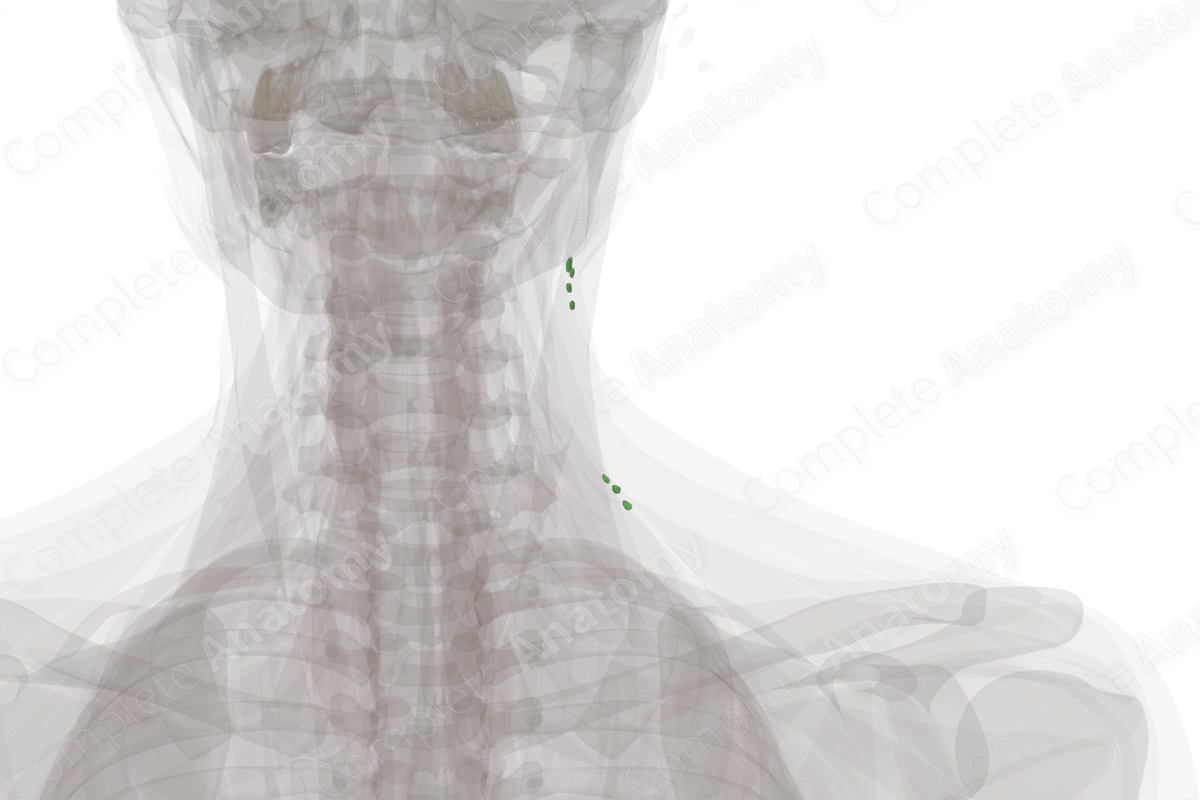
Quick Facts
Location: Follow the course of the inferior portion of the accessory nerve in the posterior triangle of the neck.
Drainage: The skin covering occipital, retroauricular, and parietal areas of the scalp, skin on the lateral and posterior neck and shoulder, oropharynx, nasopharynx, and thyroid gland.
Direction of Flow: Subclavicular nodes > jugular trunk > thoracic duct (left) or right lymphatic duct.
Related parts of the anatomy
Description
The accessory lymph nodes are named due to their close anatomical relationship with the inferior portion of the accessory nerve in the posterior triangle of the neck. These nodes are subdivided into two groups based on their location in the neck. The superior group of nodes is located at the meeting point of the accessory and jugular chains, just beneath the proximal part of sternocleidomastoid muscle are therefore called sternocleidomastoid nodes. Conversely, those found inferiorly at the meeting point of the accessory and subclavicular chains, tucked beneath the trapezius muscle and are so-called the subtrapezius nodes (Földi et al., 2012; Koroulakis and Agarwal, 2018).
Lymph fluid collected in the occipital and mastoid nodes will have efferents to the accessory chain, thus collecting lymph fluid from the skin overlying the occipital, parietal, and retroauricular areas. In addition, these nodes will have afferents to local tissues including the lateral and posterior neck and shoulder and some deeper structures in the neck, such as the oropharynx, nasopharynx, and thyroid gland (Koroulakis and Agarwal, 2018).
List of Clinical Correlates
—Metastatic deposits from malignancies of the nasopharynx, oropharynx, and thyroid
References
Földi, M., Földi, E., Strößenreuther, R. and Kubik, S. (2012) Földi's Textbook of Lymphology: for Physicians and Lymphedema Therapists. Elsevier Health Sciences.
Koroulakis, A. and Agarwal, M. (2018) Anatomy, Head and Neck, Lymph Nodes.: Treasure Island (FL): StatPearls Publishing (Accessed: 12 July 2019).




